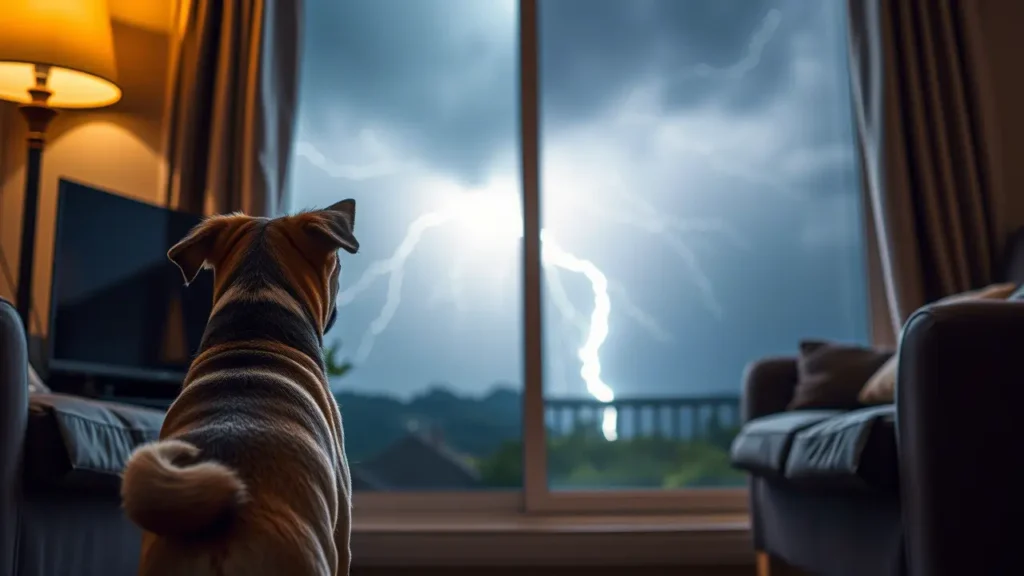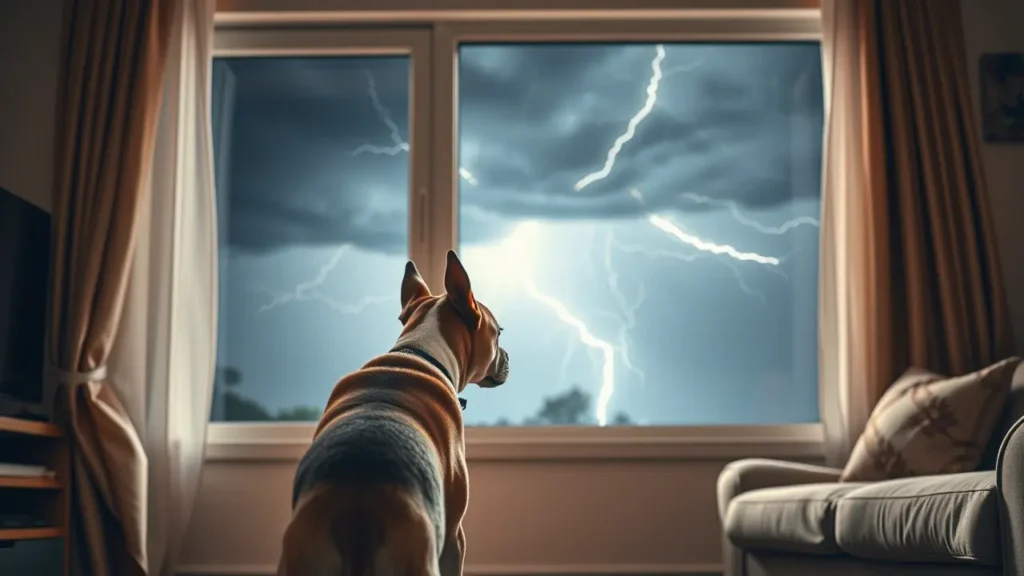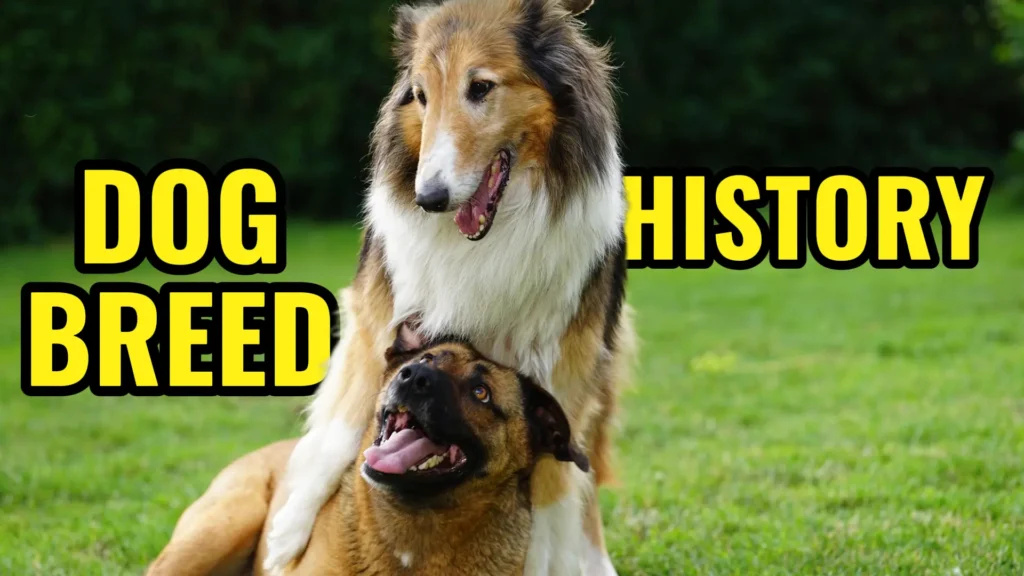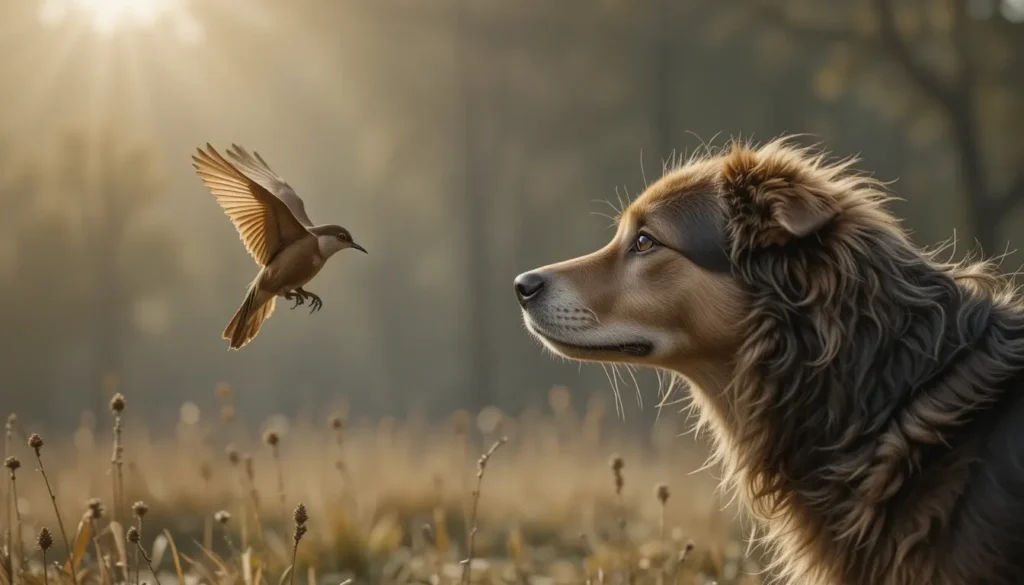Thunderstorms can transform dog into a trembling bundle of nerves. The sudden booms of thunder, flickering lightning, and eerie shifts in air pressure trigger profound anxiety in dogs. For dog owners, witnessing this distress is heart-wrenching.
The good news is that there are compassionate and effective ways to help your dog manage their fear of thunder. This comprehensive guide dives into understanding thunderstorm anxiety, recognizing its signs, and implementing practical strategies to keep your dog calm and safe during stormy weather.
Why Are Dogs Afraid of Thunder?
Dogs have far more acute senses than humans. They can detect sounds at higher frequencies and feel subtle vibrations we miss. Thunder’s booming nature mimics the sound of danger. It triggers a fight-or-flight response in dogs.
Lightning’s bright flashes and the static electricity in the air further disorient them. Some dogs develop fears for a variety of reasons. A frightening experience during a storm leaves a lasting impression in dogs. Certain breeds, like herding dogs and hounds, are prone to noise sensitivity due to their alert natures.
Puppies not exposed to loud noises during their critical socialization period (3–12 weeks) may be more likely to develop fears. Dogs with existing anxiety disorders find storms particularly overwhelming.
Understanding these triggers helps tailor your approach to your dog’s unique needs.
Recognizing the signs of thunderstorm anxiety. Common signs of thunderstorm anxiety include:
- Physical symptoms: Trembling, panting, drooling, and tucked tails.
- Behavioral changes: Pacing, whining, barking, and howling incessantly.
- Hiding: Seeking refuge under furniture, in closets, or behind you.
- Destructive behavior: Chewing furniture, scratching doors, and digging in panic.
- Escape attempts: Trying to bolt out of the house or yard. This can lead to dangerous situations.
- Clinginess: Following you obsessively or refusing to leave your side.
Some dogs show subtler signs, like lip-licking, yawning, and refusing food. Pay attention to your dog’s baseline behavior so you can spot these changes early.
Short-term Strategies to Comfort Your Dog During Thunderstorm
When a storm hits, help your dog feel secure and reduce their immediate distress. Here are some actionable steps to try.
Create a Safe Haven
Dogs instinctively seek enclosed spaces when frightened. These places help them feel protected. Set up a designated safe zone for them. Choose a quiet, interior room for this cause. The room may have no windows. It can be a basement, bathroom, or laundry room. This room minimizes noise and light. If that’s not possible, a corner of a familiar room can suffice.
Make it inviting. Outfit the space with their favorite bed, blankets, and toys. If your dog is crate-trained, leave the crate door open.
Reduce sensory input. Draw curtains, lower blinds, and cover windows to block lightning flashes. Add a white noise machine, fan, and calming playlist to muffle thunder.
Use familiar scents. Place an unwashed shirt of yours in the area. Your scent can be a powerful comfort.
Introduce this space on calm days with treats and praise so your dog associates it with positivity. During a storm, gently encourage them to use it.
Be a Calming Presence
Your demeanor sets the tone for your dog’s emotional state. Dogs are highly attuned to human cues. So project calm confidence to keep your dog calm during the thunderstorm.
Stay relaxed. Avoid reacting dramatically to thunder yourself. If you tense up or rush around, your dog may interpret the storm as a bigger threat. So, comfort thoughtfully. It’s a myth that petting a scared dog “rewards” fear—comfort is fine, but keep it low-key. Use slow, gentle strokes and a soothing voice rather than high-pitched reassurances.
Engage casually. Sit near their safe space, read a book, and do a quiet activity to normalize the environment. Invite them to cuddle if they seek it. Don’t pressure them. Respect their boundaries. If they want to hide or stay distant, let them. Forcing interaction increases stress. Your steady presence reassures them that the storm isn’t a crisis.
Distract with Engaging Activities
Keep your dog’s mind occupied with enjoyable activities. This diverts attention from the storm. Offer treats they love but don’t get often. Smearing peanut butter inside a toy can keep them licking.
Try indoor games. Participate tug-of-war, hide-and-seek with treats, and short training sessions. These burn mental and physical energy. Timing matters. Start distractions early. Do it when you hear distant thunder or see weather alerts before their fear peaks. Distraction works best for mild to moderate anxiety. This may not engage dogs in full panic mode.
Use Calming Aids
A variety of products can enhance your dog’s sense of security:
Pressure wraps. Anxiety vests apply gentle, constant pressure. Research suggests this can lower heart rates in anxious dogs by stimulating calming nerve pathways. Try it on during calm moments first to ensure a good fit.
Try pheromone therapy. Adaptil diffusers, sprays, and collars release synthetic dog-appeasing pheromones. This mimics those produced by nursing mothers. These create a sense of safety. L-theanine, melatonin, chamomile, and valerian root promote relaxation. Zesty Paws and PetHonesty offer vet-formulated chews.
For severe cases, veterinarians may prescribe anti-anxiety drugs. These are typically short-term solutions for storm season. Some owners report success with pet-safe CBD oils, though evidence is mixed. Always choose vet-approved products and discuss with your vet.
Test calming aids outside of storms to confirm your dog responds well. Follow product guidelines carefully.
Prepare Proactively
Storms can strike suddenly. Preparation minimizes chaos. Monitor weather. Use AccuWeather or NOAA Weather Radar to track storms. Early warnings give you time to act before your dog spirals.
Exercise in advance. A long walk, run, and play session before the storm can tire your dog out. These make them less reactive to triggers. Mental stimulation also helps. Secure your home. Close windows and doors to reduce noise. Ensure your dog’s ID tags and microchip info are up-to-date in case they escape. Block access to areas where they might hurt themselves if panicked.
Stock supplies. Keep treats, toys, and calming aids ready in a storm kit for quick access. Proactivity sets you and your dog up for success.
Long-Term Solutions For Desensitizing Your Dog to Thunderstorms
Long-term strategies aim to reduce your dog’s fear over time through behavior modification. These methods require patience but can yield lasting results.

Counter-Conditioning with Thunder Sounds
Counter-conditioning pairs the scary stimulus (thunder) with something positive (treats) to change your dog’s emotional response: Get recordings. Download high-quality thunderstorm soundtracks designed for dogs. Play the sounds at a barely audible volume during a relaxed moment. Toss treats or praise them for staying calm.
Over weeks or months, slowly increase the volume and duration. Stop if your dog shows stress. Keep sessions short—5–10 minutes. Vary the timing and intensity to mimic real storms. Always end on a positive note. Progress may be slow, but consistency pays off.
Build General Confidence
A confident dog is less prone to anxiety. Boost their resilience with training and enrichment. Teach new tricks or reinforce basic commands to build trust and mental sharpness. Positive reinforcement classes also socialize them to new environments.
Provide daily puzzles, scent games, and obstacle courses to stimulate their brain and reduce overall stress. Regular physical activity helps burn off nervous energy and releases endorphins. A well-rounded routine makes storms less overwhelming in the grand scheme.
Address Underlying Anxiety
If your dog is anxious outside of storms, their thunder fear may be part of a broader issue. Work on these triggers holistically. Desensitize to other noises. Use similar counter-conditioning for sounds like fireworks and vacuums.
Create predictability. A consistent daily schedule for feeding, walks, and play can ground anxious dogs. Monitor health. Pain and medical conditions can amplify anxiety. Regular vet checkups rule out physical contributors. Tackle the root causes. This enhances your dog’s ability to cope with storms.
Some dogs have thunderstorm phobias so severe that home strategies aren’t enough. Signs it’s time to consult a professional. Call your vet when you see self-injury, destroying property, and escaping repeatedly. Vet helps when months of counter-conditioning yield no improvement. Take the advices of vets when storms disrupt your dog’s quality of life.
A professional assesses whether medication, advanced behavior modification, or both are needed.
Tailoring Solutions to Your Dog
Helping a thunder-frightened dog requires care to avoid worsening their fear. Don’t punish fear. Yelling, forcing, and scolding increases anxiety and erodes trust. Don’t overwhelm them. Don’t force them to face the storm or playing thunder sounds too loudly during desensitization. This can intensify their phobia.
Don’t ignore escalation. If your dog’s reactions worsen, address it promptly to prevent a full-blown phobia. Don’t assume they’ll “grow out of it”. Fear often deepens with age or repeated exposure. Empathy and patience are your greatest assets to combat your dog’s fear.
What works for one may not suit another. Age, breed, temperament, and past experiences shape their response to storms. Gentle exposure to storm-like sounds can prevent fears in puppies. Go slow to avoid trauma. Aging dogs may develop new fears due to cognitive decline and hearing changes. Focus on comfort and vet guidance.
Unknown histories mean deeper fears. Build trust gradually if you adopt your dog from shelter. Labs and Huskies need more exercise pre-storm to stay calm.
Experiment with combinations of strategies and observe what resonates with your dog.
Preparing for Storm Season
If you live in an area with frequent thunderstorms, proactive planning is critical. Before storm season, refresh your dog’s safe space. Stock calming aids, and practice desensitization during quieter months. If a storm hits while you’re away, ensure your dog has access to their safe zone and a trusted pet sitter knows their needs. Consider doggy daycare for severe cases.
Connect with local dog trainers or online forums for region-specific tips. A little foresight goes a long way toward easing your dog’s distress.
Set realistic expectations to handle thunderstorm fear in your dogs. Progress may take months. Celebrate small wins. Talk to fellow dog owners for practical approach. Practice self-care. Storms can disrupt your routine, too. Take breaks, breathe deeply, and remember you’re doing your best.
Helping a dog afraid of thunder is a journey of trial-and-error. By combining tactics, you can reduce their fear and build their resilience. Stay attuned to their needs, avoid common pitfalls, and don’t hesitate to seek professional help if needed. With time, your dog learns to weather storms with courage, and you’ll both emerge stronger for it.




